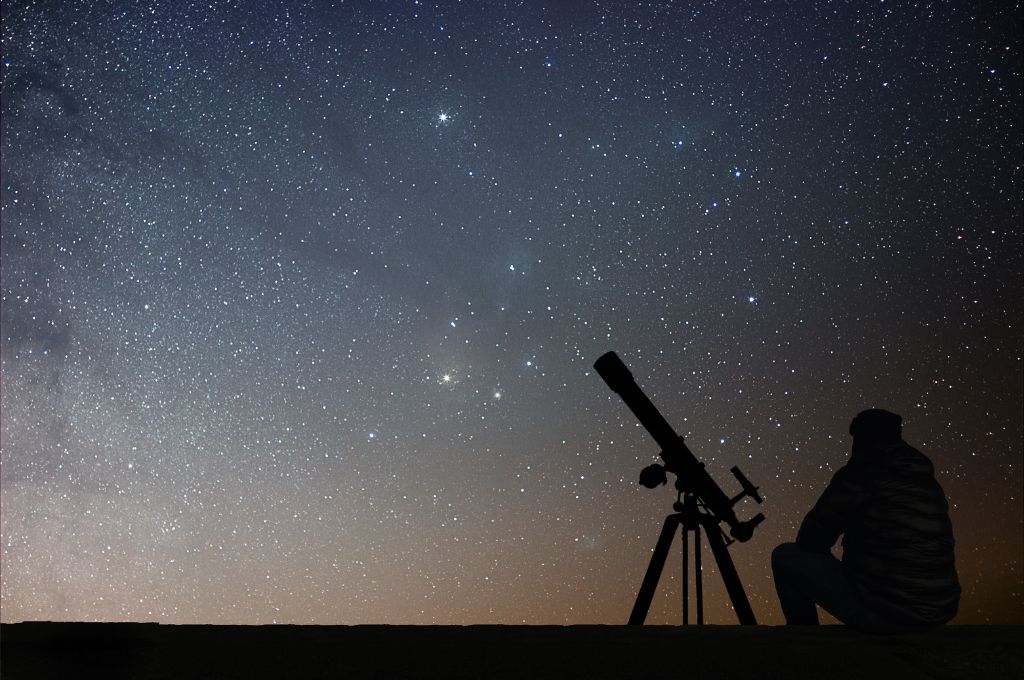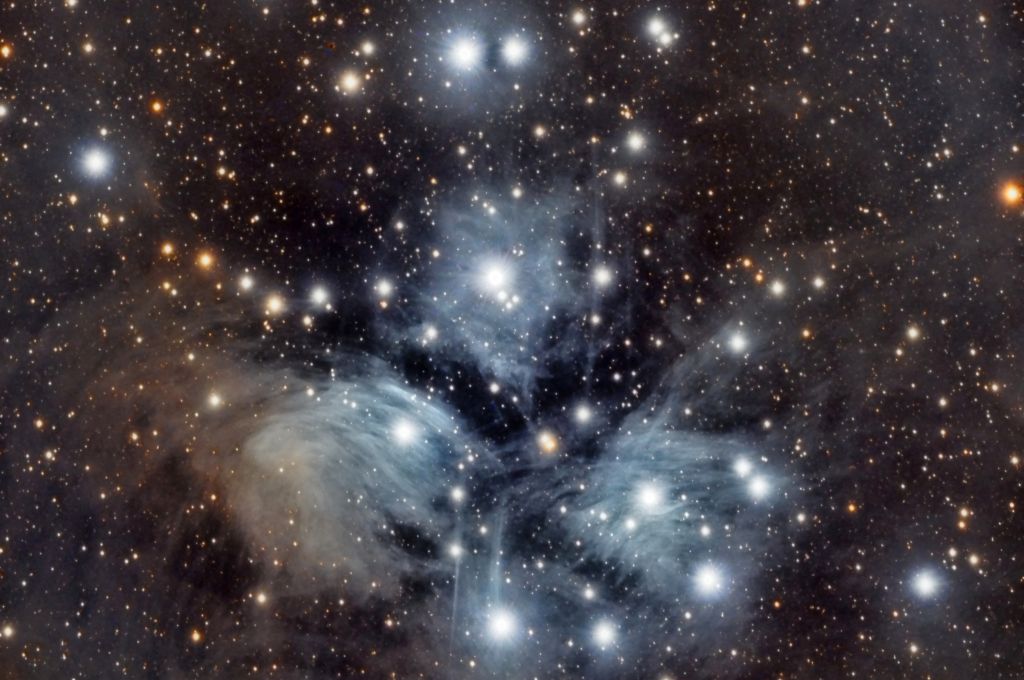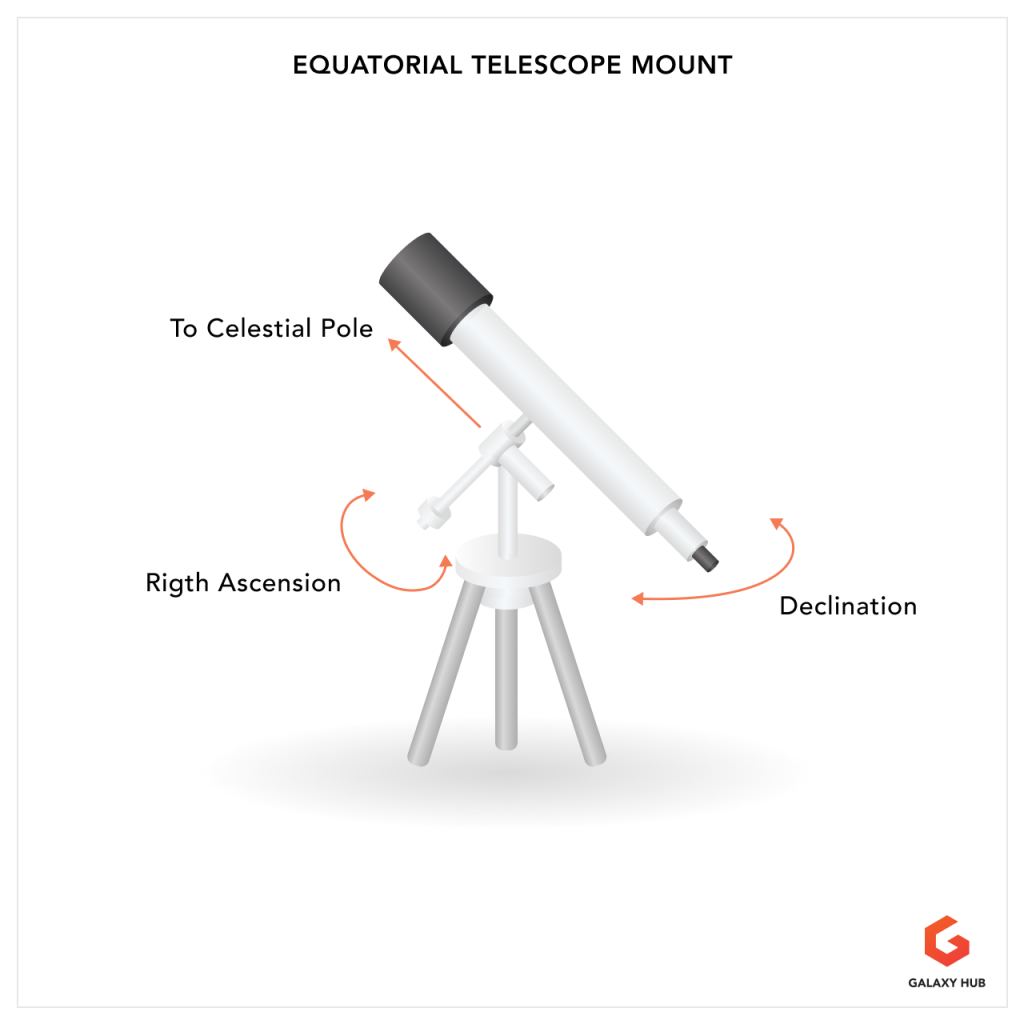As you begin your astronomical adventure, there are a number of terms and phrases you’ll frequently hear – and the words “transparency” and “seeing” are just two of them. Both transparency and seeing refer to the condition of the atmosphere, which, in turn, affect the quality of the image through your telescope.
The two terms are very much interlinked and often confused, so let’s use a simple analogy before reviewing a more detailed definition.
One common example is that of a swimming pool. Imagine there’s a coin at the bottom of the pool. If the water is clean, then it will be clear and you should have no problem seeing the coin.
If the water is dirty (maybe it’s winter and it hasn’t been cleaned in a few months!) then the coin may be harder to see. That’s transparency, and it’s an indication of how many objects can be seen in the night sky.
Now look carefully at the coin. Is the water still and the image steady, or is the water moving a lot and the image very distorted? That’s seeing. It’s a measure of how clearly an object can be seen.
Now that we have a basic grasp of the concepts, let’s look a more detailed look at what this means.

What is Transparency?
Essentially, transparency is how clear the atmosphere is, which, in turn, affects what you can see. There are all manner of pollutants in the atmosphere – whether it’s dust, haze, smoke or pollution from a nearby city – and all these pollutants affect what you can see.
The best time to observe any object – for example, a galaxy – is when it’s at its highest in the sky.
When you look directly overhead, you’re looking at the object through the thinnest portion of the atmosphere, and more of its light is able to reach your eyes. The atmosphere is densest close to the horizon, and the denser the atmosphere, the less light is able to pass through.
That’s because denser pollutants tend to remain closer to the ground, so when you look toward the horizon, you’re looking through the lower levels of the atmosphere and a greater concentration of pollutants.
As a result, you’ll see more stars and other objects overhead than closer to the horizon. A galaxy might be clearly visible while at its highest, but then vanish completely as it sinks toward the horizon. Even brighter objects, such as the planets Mars and Saturn, can vanish if they’re not at their brightest and too close to the horizon.
A related term is extinction. This relates to how much fainter an object will appear due to the atmosphere, and is directly influenced by the transparency of the atmosphere, the elevation of your location above sea level and the altitude above the horizon of your target.
Extinction can occur either by absorption or by scattering. Aborption occurs when the light is essentially smothered, whereas scattering will spread the light out over a greater area.
For example, plants absorb red and blue light but reflect green, which is why their leaves are that color. That’s absorption. However, gases and particles in the atmosphere causes blue light to scatter, which is why we have a blue sky. (Incidentally, even under the darkest conditions, the night sky is still very slightly blue.)

What is Seeing?
Whereas transparency determines if an object is visible, seeing determines how clearly it can be seen.
Just because you can see an object, it doesn’t necessarily mean that the object can be clearly seen. For example, you can see the sun as it rises and sets, but as it’s passing over the horizon, the layers of the atmosphere cause its image to be badly distorted and misshapen.
Your seeing conditions are really determined by the steadiness of the atmosphere; the more unstable the air, the more likely the image will appear to shimmer.

How Are Objects Affected by Transparency and Seeing?
Since poor transparency can drown out the light from fainter objects, it should come as no surprise to learn that the Moon and planets are the least affected by it, whereas faint, deep sky objects (such as galaxies) are the first things to vanish.
Conversely, the opposite is true when it comes to seeing. Details on the Moon and planets can appear razor sharp when the seeing is excellent, but can be blurred and distorted when the seeing is bad. For example, if you have a smaller scope, your chances of seeing Jupiter’s Great Red Spot may very well depend upon the seeing conditions.
Close double and multiple stars are also affected by seeing, as the two stars could simply appear as a single, blurry point if the seeing isn’t good.
However, while faint deep sky objects may be the first to disappear with poor transparency, they’re not too badly affected by seeing. While their faintness is the very reason they’re affected by transparency, their lack of light is a benefit in poor seeing as there’s less light to be misshapen and distorted.

How Can You Tell What the Conditions Will Be?
While you might think that transparent skies and excellent seeing go hand-in-hand, that’s not necessarily the case. For example, it’s not unusual to have excellent transparency but bad seeing, and that can quickly ruin your planetary observing plans.
So how can you tell what the conditions will be like?
Transparency is caused by pollutants in the air, both natural and man-made. If, for example, you live in an area close to an industrial town or city, or anywhere that can be affected by wildfires, then you should know that your transparency could be affected.
Also be aware of the humidity and moisture, as this results in denser air, which will then negatively impact transparency. On the flip side, transparent skies can often follow a rainstorm, as the rain will wash the polluting particles away.
Seeing can be a little tricky to predict, but if you’ve been experiencing a period of high pressure for a few days, there’s a decent chance the seeing will be steady. High pressure systems generally bring dry conditions; in the summer, that means warmer weather, while in the winter that can bring cold weather.
Be on the lookout for unusually cold temperatures, as these can result in poor seeing. Similarly, if the weather has changed that day, this can also cause poor seeing, as the warm and cold air will mix to produce atmospheric turbulence.
Beyond this, there are a number of websites and apps you can use to predict transparency and seeing for your location. For example, a favorite with amateur astronomers is Clear Dark Sky, which also includes estimates of cloud cover, smoke, and limiting magnitude.
Astrospheric presents similar information, but also has the advantage of being available as an app for your Apple or Android smartphone. Other apps include Scope Nights (Apple only) and Good to Stargaze. (There’s another, Clear Outside, which has a lot of detailed weather info, but nothing specifically regarding transparency or seeing.)
Another, more general weather website worth considering is MeteoBlue. It has a lot of potentially useful information for astronomers – not only will it provide a weather report, but also the rise and set times of the sun and moon, the visibility of the planets, plus estimates of cloud cover, potential resolution (in arcseconds) and two estimates of seeing (look for the Index 1 and 2 columns.)
(Incidentally, their app does not have the same info.)
How Can You Tell What the Conditions Are Right Now?
Regardless of where you get your information from, we all know that weather forecasts can be a little hit or miss. For starters, the information could be based upon a weather station located miles from you, and depending on where you live, your weather conditions could be completely different.
For example, there could be a weather station atop a nearby hill, but if you live down in the valley, you could be experiencing something else.
One solution is to buy a “hyperlocal” weather forecasting station. These are typically fairly inexpensive and are made up of an outdoor sensor and an indoor forecasting device. They probably won’t indicate seeing or transparency, but you can get better sense of the conditions outside than you would by relying on data from elsewhere.
Realistically, for the greatest accuracy, you’ll need to keep a careful track of the weather and the quality of transparency and seeing that goes with it. Over time, when combined with the basic weather information you have from your go-to source, you could then have a realistic expectation of what the observing conditions might be that evening.
For example, you may be able to predict if the seeing will improve or worsen, based on the change in temperature over a 24 hour period.
In order to do this, besides knowing the current weather conditions, such as temperature and humidity, you’ll also need to make your own estimate of transparency and seeing.
How Do You Estimate Transparency?
While it’s possible to predict transparency using some fairly complex math, a much simpler solution is to step outside and look up at the stars. This is really where you’ll need to create your own personalized scale, as the number and brightness of the stars you see can vary for everyone.
More specifically, you may see more or fewer stars based upon factors such as:
- Light pollution – unless you live out in a rural location, far from any neighboring homes, towns or cities, the chances are light pollution will brighten the sky and make it difficult to see the fainter stars.
- Your eyesight – for whatever reason, few of us have perfect 20/20 vision and this will obviously have an influence on the number of stars you can see.
- Dark adaption – even if you have perfect eyesight, you’ll still need to allow your eyes time to adjust to the dark. Realistically, it will take about 30 minutes for your eyes to become properly adapted. Without that dark adaption, fainter stars may be invisible.
- The darkness of the sky – you’ll want to make sure your skies are properly dark. This means twilight (civil, nautical and astronomical) should be over and you’ll need to be aware of the phase of the Moon. If the Moon is between half and full, it can brighten the sky and drown out the fainter stars.
Assuming you’ve allowed time for your eyes to adapt to the dark, look directly overhead and see if you can find the faintest star. If you’re staying outside to observe, make a mental note of it and then check its magnitude later. This is your limiting magnitude, and it’s a good idea to record it, along with the weather conditions.
Alternatively, use the Transparency guide from the Astro League. This allows you to rate the transparency based upon how many stars in Ursa Minor you can see. Ursa Minor can act as a great yardstick, as it contains stars of varying magnitude and is visible all year round from much of the northern hemisphere.
If you keep track of this information and the weather conditions over time, you’ll get an idea of what the faintest star (and transparency) may be, based upon the weather that evening.

How Do You Measure Seeing?
Seeing works a little differently, but there are several ways to measure this. One popular method is the Antoniadi Scale, but it really requires the use of a telescope. Invented by the Greek-French astronomer E. M. Antoniadi, it utilizes a five point scale, with the rating based upon the stability of the image through the eyepiece:
- (I) Perfect seeing, without a quiver.
- (II) Slight quivering of the image with moments of calm lasting several seconds.
- (III) Moderate seeing with larger air tremors that blur the image.
- (IV) Poor seeing, constant troublesome undulations of the image.
- (V) Very bad seeing, hardly stable enough to allow a rough sketch to be made.
Another option, like the transparency guide mentioned above, comes from the Astro League. Arguably, their guide is a little more versatile, as it can be used by anyone, including naked eye observers. That’s because it only needs you to estimate how much the stars are twinkling:
- E (excellent) – The brighter stars are not twinkling at all.
- VG (very good) – The stars are twinkling slightly, but the brighter planets are not twinkling.
- G (good) – The brighter planets are twinkling slightly.
- F (fair) – The brighter planets are obviously twinkling.
- P (poor) – The atmosphere is turbulent. All objects are twinkling to the point where observation is not practical.
This makes it a great option for all observers, regardless of their location and equipment, as it only requires you to see the stars in the first place!

What Can You Do About Transparency and Seeing?
Despite what you might think, transparency and seeing shouldn’t put an end to your plans. For starters, there are a few things you can do before you start observing that will help you make the most of the situation.
- Find a dark location – whenever you can, observe from a location as far from a town or city as possible. The darker your sky, the more stars you can see and the fainter the deep sky object you’ll be able to detect.
- Find a higher location – if possible, try to find a location that has a higher elevation above sea level. The greater the altitude, the fewer pollutants will be in the air.
- Wait for your equipment to cool down – if you store your scope inside, then the air inside the tube will be at the ambient temperature indoors. The chances are, this will be warmer than outside, and if you don’t allow time for your scope to cool, the warmer air inside the tube will cause the image to shimmer. Take the telescope outside, remove all the caps and wait at least an hour for the air to cool. (Larger scopes could take around two hours.)
Even if you take the steps listed above, there’s still no guarantee you’ll get perfect observing conditions, but you can always work with what you’ve got.
- Observe targets when they are at their highest. The higher an object’s altitude, the thinner the atmosphere its light will need to travel through. (Be aware, of course, that it’s difficult to observe objects near the zenith as they’ll be overhead, so it might be best to observe when the object is between 30 and 60 degrees above the horizon.)
- If the transparency is poor, focus on brighter targets, such as the Moon and planets. Assuming the seeing is good, you can also still observe brighter double stars and open clusters.
The thing to remember is that having both perfect transparency and seeing is very rare, and while you may have to adjust your plans, there is always something worth seeing!






